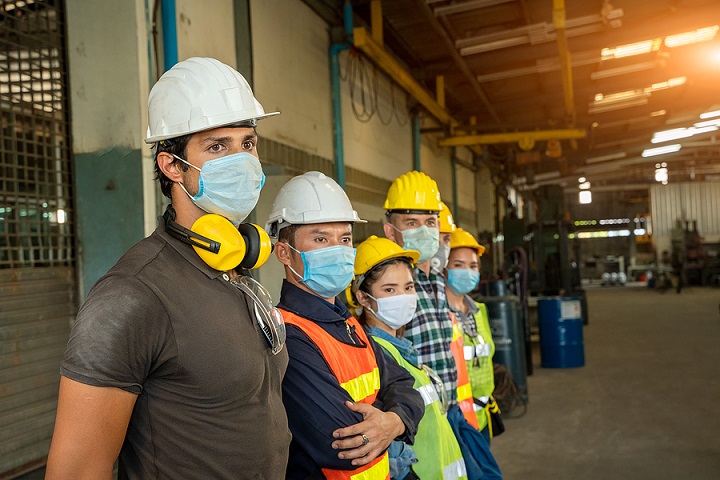Know Your OSHA Obligations if COVID-19 Strikes Your Business
Kirsch CPA Group
Apr 14, 2021

Not all employers are bound by the recordkeeping and reporting requirements established by the Occupational Safety and Health Administration (OSHA). Generally, an employer must have more than 10 employees to be subject to those legal obligations, unless OSHA specifically instructs you otherwise.
Your company also must be in an industry that’s considered hazardous, such as manufacturing, construction, utilities, agriculture and wholesale trades. Examples of non-hazardous industries include retail, financial services, and real estate. OSHA classifies industries using the Census Bureau’s North American Industrial Classification codes. If you’re uncertain about your status regarding OSHA, contact the agency.
Reporting requirements can vary by each business establishment — defined as “a single location where business is conducted or where services or industrial operations are performed.” That means if you have multiple locations with varied functions, it’s possible that one location is subject to OSHA recordkeeping (maintaining an OSHA log) and reporting requirements, and another isn’t.
OSHA “General Duties Clause”
Beyond administrative requirements, all employers large enough to be subject to regulations specified in the Occupational Safety and Health Act (regardless of industry) are covered by the law’s “general duties clause.” This clause specifies that employers must give employees a place to work “free from recognized hazards that are causing or likely to cause death or serious physical harm.”
Also, 28 states have their own laws and regulations governing occupational health that might be more stringent than OSHA’s. Perhaps you operate in one of them.
If you’re subject to OSHA’s recordkeeping and reporting requirements, how does COVID-19 fit into that picture? According to OSHA, the following conditions must be met before you are required to record an employee COVID-19 case:
- Most basic: The employee’s ailment is, indeed, proven to be COVID-19,
- The case “involves one or more of the general recording criteria” laid out in OSHA regulations, including, for example, that the condition can’t be remedied with basic first aid procedures, and
- The disease was contracted in conjunction with the employee’s work.
Determining What’s “Work-Related”
OSHA concedes that “in many instances, it remains difficult to determine whether a COVID-19 illness is work-related, especially when an employee has experienced potential exposure both in and out of the workplace.” With that challenge in mind, OSHA has laid out some “enforcement guidance” for its investigators to determine violations applicable to COVID-19 cases.
Here are three highlights included in that guidance:
- A discussion of the reasonableness of the employer’s investigation into work-relatedness. “Employers, especially small [ones], should not be expected to undertake extensive medical inquiries, given employee privacy concerns.”
- An examination of the evidence available to the employer. Employers shouldn’t be penalized for good-faith determinations when limited evidence was at hand to draw an accurate conclusion about whether a COVID-19 case was work-related.
- A look at how available evidence is interpreted.
The OSHA enforcement guidance offers several illustrations of evidence that is likely to lead to a reasonable conclusion that a COVID-19 case was work-related. One example is when several employees who work closely together all come down with COVID-19 and there’s no alternative explanation. Another involves the employee whose job duties “include having frequent, close exposure to the general public in a locality with ongoing community transmission.”
Recordable vs. Reportable
As with other workplace-related illnesses and injuries, a work-related COVID-19 case may be “recordable” (and thus logged), but not “reportable” — that is, promptly reported to OSHA. To be recordable, an illness or injury must be too serious to be remedied with basic first aid and involves time away from work. COVID-19 cases often fit that description.
To be reportable, the case either involves in-patient hospitalization or, in the ultimate example, death. However, that standard isn’t as clear-cut as it might appear with COVID-19. That’s because to meet the “reportable” standard, the hospitalization must occur within 24 hours of the incident. In the COVID-19 case, the incident is exposure to the SARS-CoV-2 virus that leads to the disease. It’s unlikely that someone who is exposed to the virus one day would be hospitalized within 24 hours.
You’d also need to know that the employee was hospitalized and that the COVID-19 case was work-related. Knowing both promptly may be improbable. However, as soon as you do determine that the case was work-related, you’ve got 24 hours to report it to OSHA.
When an employee dies of a confirmed COVID-19 case, and the death occurs within 30 days of exposure to the virus, you have an eight-hour window to report it to OSHA from the time you know “both that the employee has died, and that the cause of death was a work-related case of COVID-19,” according to a Q&A provided by the agency.
A Little Perspective
OSHA’s enforcement guidance — and common sense — indicate that proper recording and reporting take a back seat to a basic concern for employee health. “In all events,” the guidance states, “it is important as a matter of worker health and safety, as well as public health, for an employer to examine COVID-19 cases among workers and respond appropriately to protect workers, regardless of whether a case is ultimately determined to be work-related.”
We can help you tackle business challenges like these – schedule an appointment today.
© Copyright 2021. All rights reserved.
More Resources

About The Author
Kirsch CPA Group is a full service CPA and business advisory firm helping businesses and organizations with accounting,…
Sign Up for Email Updates
Tags
Accounting & Financial News

Tax Law Changes: 10 Provisions Employers Need to Know
The One Big Beautiful Bill Act (OBBBA) includes a number of tax law changes that affect employers.…




